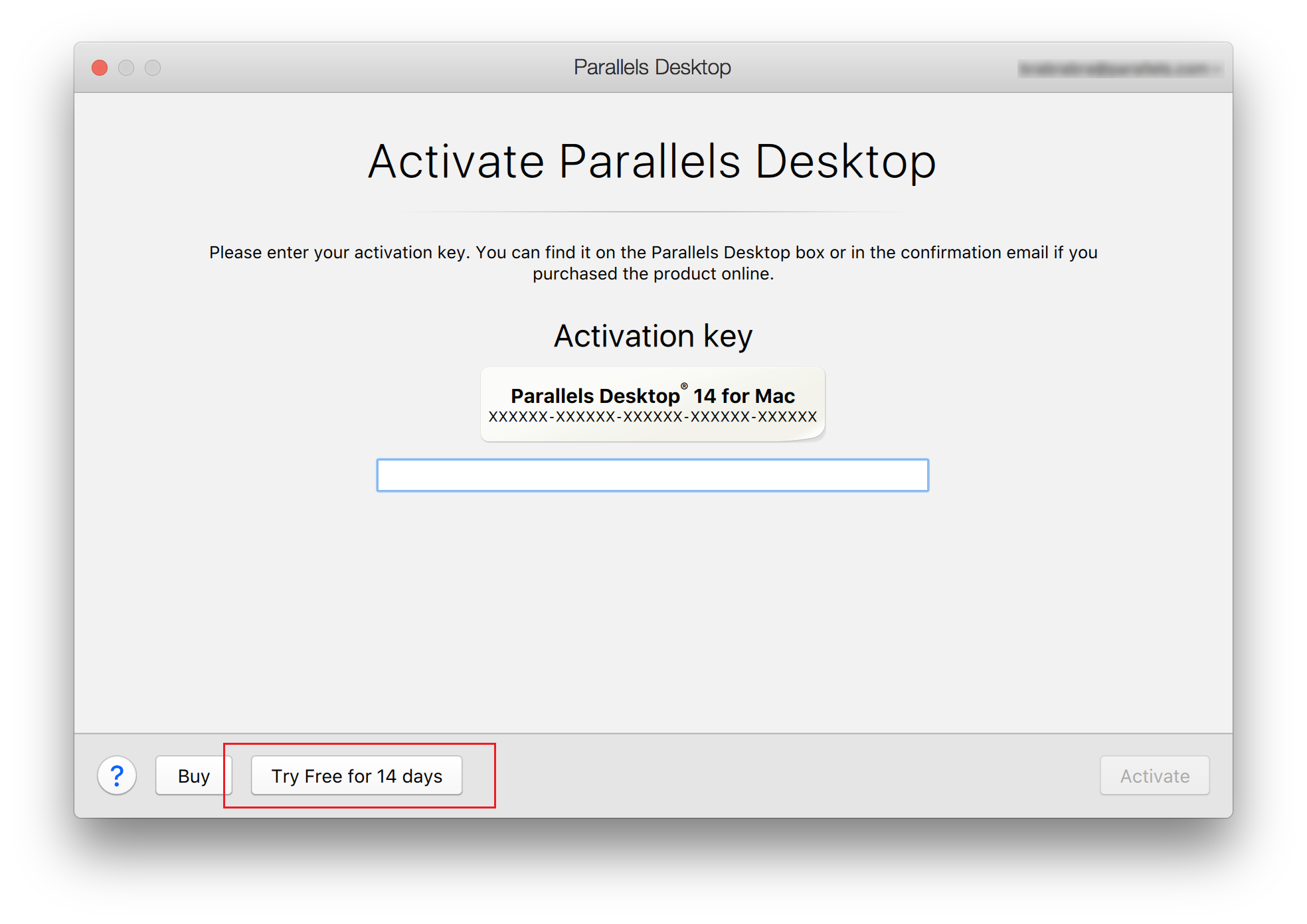

- #ACTIVATION KEY FOR PARALLELS DESKTOP HOW TO#
- #ACTIVATION KEY FOR PARALLELS DESKTOP SOFTWARE#
- #ACTIVATION KEY FOR PARALLELS DESKTOP PC#
Installation Disk A of Microsoft OS/2 1.3 (3½-inch floppy disk)

Ĭommunications and database-oriented extensions were delivered in 1988, as part of OS/2 1.0 Extended Edition: SNA, X.25/ APPC/LU 6.2, LAN Manager, Query Manager, SQL. A task-switcher named Program Selector was available through the Ctrl-Esc hotkey combination, allowing the user to select among multitasked text-mode sessions (or screen groups each can run multiple programs). Other development tools included a subset of the video and keyboard APIs as linkable libraries so that family mode programs are able to run under MS-DOS, and, in the OS/2 Extended Edition v1.0, a database engine called Database Manager or DBM (this was related to DB2, and should not be confused with the DBM family of database engines for Unix and Unix-like operating systems). OS/2 features an API for controlling the video display (VIO) and handling keyboard and mouse events so that programmers writing for protected mode need not call the BIOS or access hardware directly. The original release was textmode-only, and a GUI was introduced with OS/2 1.1 about a year later.

OS/2 1.0 was announced in April 1987 and released in December. It was code-named "CP/DOS" and it took two years for the first product to be delivered. The development of OS/2 began when IBM and Microsoft signed the "Joint Development Agreement" in August 1985. OS/2 1.0 featured a text-mode interface similar to MS-DOS. Development history 1985–1989: Joint development Since then, OS/2 has been developed, supported and sold by two different third-party vendors under license from IBM – first by Serenity Systems as eComStation since 2001, and later by Arca Noae LLC as ArcaOS since 2017. IBM discontinued its support for OS/2 on 31 December 2006.
#ACTIVATION KEY FOR PARALLELS DESKTOP PC#
While OS/2 was arguably technically superior to Microsoft Windows 95, OS/2 failed to develop much penetration in the mass market consumer and stand-alone desktop PC segments.

OS/2 sales were largely concentrated in networked computing used by corporate professionals however, by the early 1990s, it was overtaken by Microsoft Windows NT. Up to $990 million per year was spent developing OS/2 and its replacement. Because of this heritage, OS/2 shares similarities with Unix, Xenix, and Windows NT. Notably, basic system calls were modeled after MS-DOS calls their names even started with "Dos" and it was possible to create "Family Mode" applications – text mode applications that could work on both systems. OS/2 was intended as a protected-mode successor of PC DOS targeting the Intel 80286 processor. The first version of OS/2 was released in December 1987 and newer versions were released until December 2001. The name stands for "Operating System/2", because it was introduced as part of the same generation change release as IBM's " Personal System/2 (PS/2)" line of second-generation personal computers.
#ACTIVATION KEY FOR PARALLELS DESKTOP HOW TO#
As a result of a feud between the two companies over how to position OS/2 relative to Microsoft's new Windows 3.1 operating environment, the two companies severed the relationship in 1992 and OS/2 development fell to IBM exclusively.
#ACTIVATION KEY FOR PARALLELS DESKTOP SOFTWARE#
OS/2 ( Operating System/2) is a series of computer operating systems, initially created by Microsoft and IBM under the leadership of IBM software designer Ed Iacobucci. Ĥ.52 / December 2001 21 years ago ( 2001-12)Ĭhinese, English, French, German, Italian, Japanese, Korean, Spanish, Slovenian, Portuguese, Russian This version was released on 25 September 1996.


 0 kommentar(er)
0 kommentar(er)
